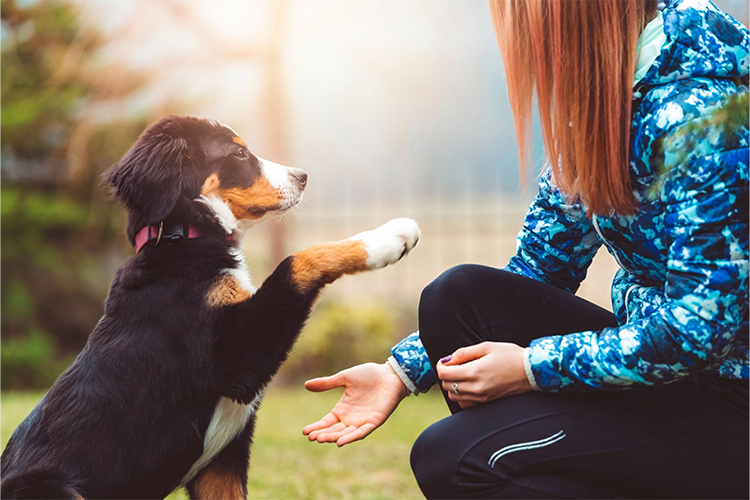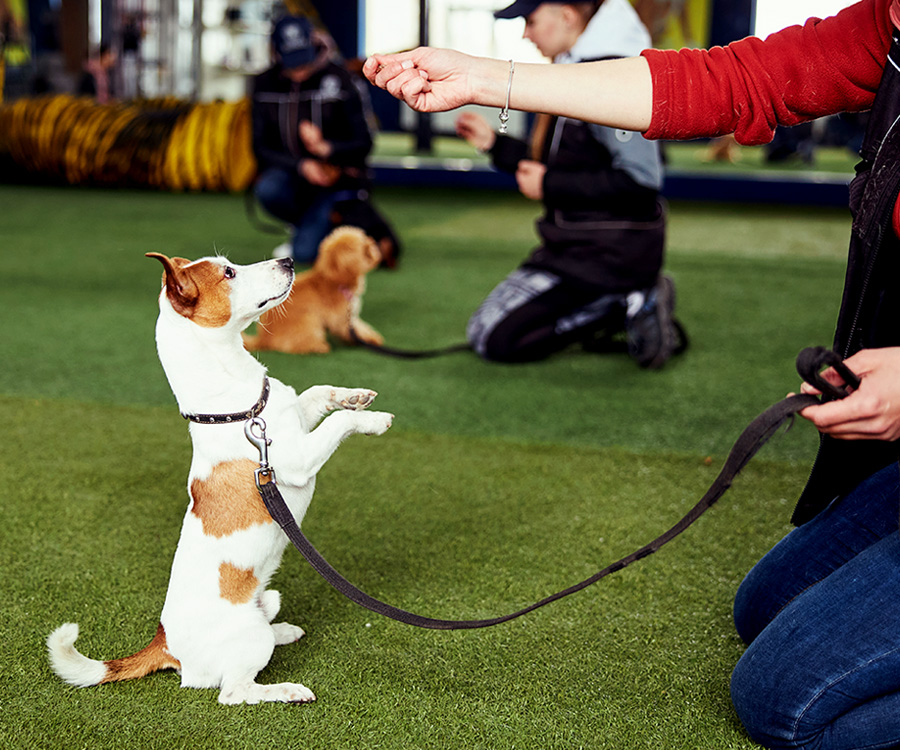Recognizing Dog Body Language During Dog Training
Recognizing Dog Body Language During Dog Training
Blog Article
Vital Tips for Successful Dog Training: A Guide for Family Pet Owners
Effective pet dog training is a multifaceted procedure that needs a strategic approach customized to both the family pet's character and the proprietor's purposes. Comprehending how to browse these obstacles can considerably enhance the training experience, inevitably changing the relationship in between owner and dog.
Recognizing Dog Actions
Comprehending dog behavior is important for effective training and cultivating a harmonious partnership in between dogs and their proprietors. Canines connect mostly through body movement, articulations, and actions, making it critical for proprietors to interpret these signals precisely. Recognizing a canine's posture, tail placement, and ear orientation can supply insights into its psychological state. As an example, a wagging tail does not constantly indicate happiness; it can additionally signify enjoyment or anxiety.

Socialization plays a considerable role in canine habits; exposure to different environments, individuals, and other animals can substantially influence a pet dog's character. Moreover, elements such as type features and specific character ought to guide training approaches, as some breeds may have specific behavior qualities that necessitate customized techniques. By recognizing these components, proprietors can develop a supportive setting that encourages favorable actions, resulting in effective training results and a deeper bond with their animals.
Establishing Regular Commands
Reliable interaction with your pet dog begins with establishing consistent commands. This foundational component of training is critical for cultivating understanding in between you and your pet. Consistency in the commands you use guarantees that your pet can accurately connect particular words or phrases with the wanted actions.
When selecting commands, choose clear, distinctive words that are simple to differentiate and state from one an additional. Prevent making use of similar-sounding commands that may perplex your dog. For instance, utilizing "sit" and "stay" is appropriate, yet "rest" and "struck" could result in misunderstandings.
In addition, keep the very same tone and volume for each and every command. Pets are delicate to vocal cues, so varying your tone can develop confusion.
It is just as essential to make certain that all member of the family are on the exact same page pertaining to the commands used. A united front in command usage will prevent mixed signals and strengthen the understanding procedure.
Positive Support Techniques
The power of favorable reinforcement in pet dog training exists in its capacity to urge preferred habits through incentives and appreciation. This technique is grounded in the principle that behaviors adhered to by positive results are most likely to be duplicated. By incorporating positive reinforcement right into your training routine, you can efficiently form your canine's behavior in a positive manner.
To implement favorable support, it's vital to determine what encourages your pet dog, whether it be imp source deals with, toys, or verbal appreciation. When your pet dog carries out a wanted activity, such as resting on command, right away award them with a treat or love. This organization between the command and the positive outcome enhances their understanding.
It's vital to timing the benefits properly; delivering the support within seconds of the desired actions helps your canine make the link (dog training). In addition, uniformity is vital-- ensure that all relative make use of the same commands and reward systems to prevent complication

Slowly, you can lower the frequency of treats as your pet dog discovers the behavior, transitioning to commend or recurring incentives. This approach not just promotes a solid bond between you and your canine but also promotes a favorable learning atmosphere, making educating a delightful experience for both.
Socialization and Communication
Regularly exposing your dog to a variety of atmospheres, people, and other pets is crucial for their social growth. Socializing must start early, preferably throughout the important home window of 3 to 14 weeks, when pups are most responsive to brand-new experiences. Older pet dogs can also profit from recurring socialization efforts.
Present your pet dog to various setups, such as parks, pet-friendly stores, and urban locations. This exposure aids them adapt to different stimulations, decreasing anxiety and concern feedbacks. Encourage positive communications with various other dogs and people, ensuring that these encounters are safe and regulated to cultivate self-confidence.
Utilize structured playdates with well-mannered canines, as this can improve your canine's social skills and educate them suitable behavior. Obedience classes and training sessions also supply excellent possibilities for socializing, enabling your canine to communicate with others in a monitored setting.
Screen your pet dog's body language during interactions, as this will assist you evaluate their convenience level. Gradually enhance exposure to more challenging situations while guaranteeing that each experience is positive. pop over to these guys A well-socialized pet is most likely to display balanced actions, making them a joy to have in any type of setting.
Attending To Common Training Challenges
Every canine owner will certainly come across training challenges eventually, no matter of their canine's age or socializing degree. Recognizing usual concerns such as stubbornness, disturbances, and terror can help in developing efficient approaches for improvement.

Distractions during training sessions can thwart emphasis. To battle this, start training in a silent setting with minimal stimulations. Gradually introduce distractions as the canine comes to be a lot more skillful in commands. visit their website Short, frequent training sessions are additionally effective in keeping interest.
Fearfulness can impede a dog's knowing process. Gradual desensitization to the resource of worry, matched with positive reinforcement, can assist relieve anxiety. Persistence is critical; never ever require a canine into a situation that triggers distress, as this might aggravate the concern.
Ultimately, understanding and dealing with these common challenges with an organized technique will promote a much more productive training experience, enhancing the bond between pet and proprietor while promoting reliable discovering.
Conclusion
In summary, effective pet training depends on an extensive understanding of canine actions, the establishment of consistent commands, and the application of positive reinforcement techniques. Socializing plays a critical duty in creating well-adjusted animals, while addressing typical training challenges needs perseverance and versatility. By executing these essential methods, animal proprietors can cultivate a strong bond with their pets and advertise desirable habits, eventually causing a harmonious partnership in between human beings and their canine companions.
Comprehending dog behavior is crucial for efficient training and promoting an unified relationship between dogs and their owners.Socializing plays a significant function in pet dog actions; exposure to various atmospheres, people, and various other animals can substantially influence a dog's character.The power of favorable reinforcement in dog training exists in its capability to encourage desired actions through benefits and appreciation. By including positive reinforcement into your training program, you can effectively shape your pet's actions in a constructive manner.
In summary, successful canine training relies on a detailed understanding of canine actions, the facility of regular commands, and the application of favorable support methods.
Report this page